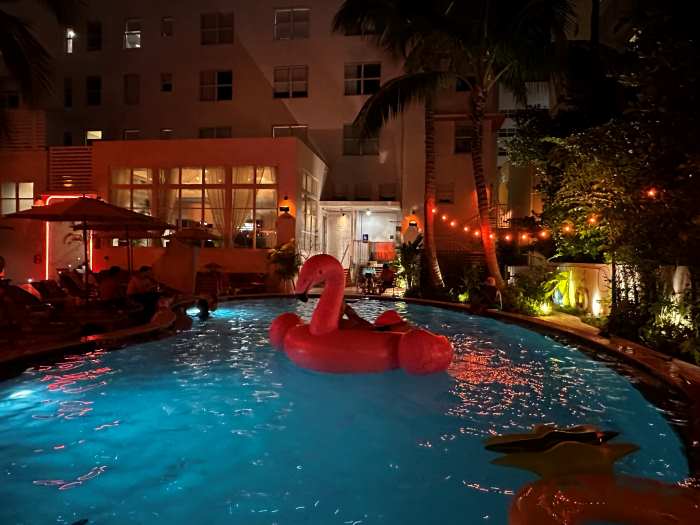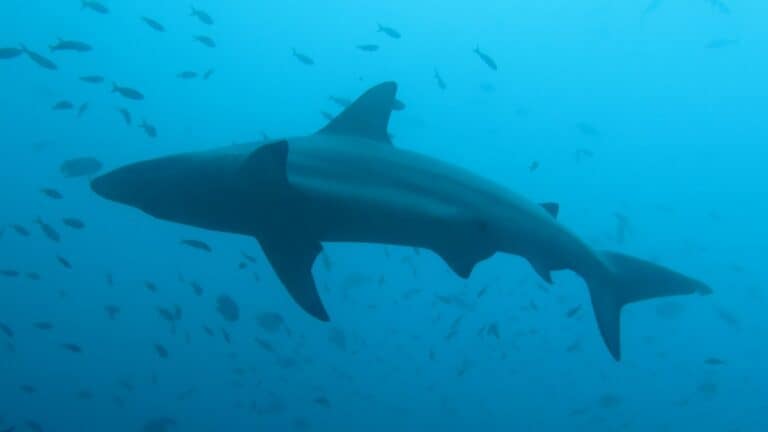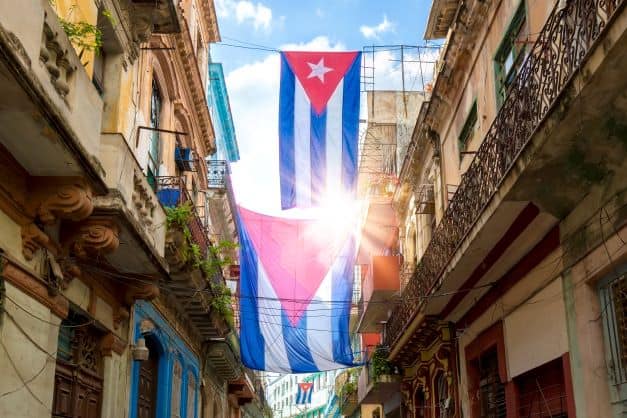12 Mesmerizing Reasons Why You Should Visit Cuba From A Local
Being a dedicated extranjera, traveling to Havana for longer periods, I have loads of hard-hitting reasons why you should visit Cuba if you need some help with the arguments.
This intriguing island nation with a unique history, beautiful nature, interesting architecture, and gorgeous beaches is one of the most fascinating places on the planet.
As one of the world’s most interesting and weird destinations can again welcome travelers, let me tell you all the other reasons why you should visit Cuba now.

12 Unique Reasons To Visit Visit Cuba!

Cuba has it if you like your travels to include history, art, nature, adventure, and beauty, as well as fiesta and chillaxing on the beach.
Here are my 12 best reasons why you need to get Cuba on your bucket list.
1. Cubas Paradisiacal Beaches!
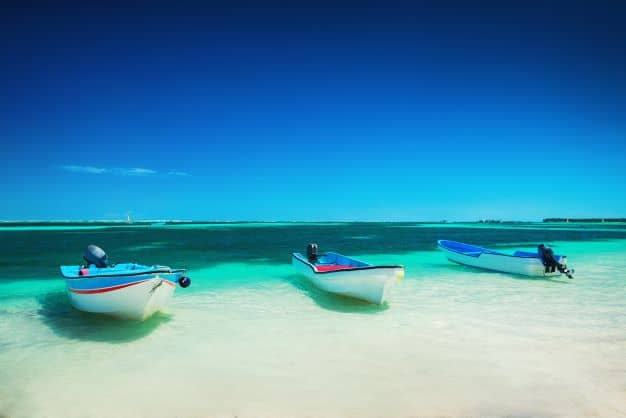
The first reason to visit Cuba is probably a no-brainer: the temperatures are flip-flop-friendly all year long, and the paradisiacal beaches are never far away.
You can grab your beach bag and tiny summer dress and be ready to go.
The best beach destinations are, no doubt, Varadero and the Cuban Keys, like Cayo Coco and Cayo Santa Maria. But even outside Havana and the other cities, the road is short to white sands and soothing waves.
2. Feel The Unique And Vibrant City Of Havana

Havana is quite simply an extraordinary city; there is no comparing this city to any other metropolis in the world.
Havana is the capital and biggest city in Cuba and is home to around two million people. This colonial town celebrated its 500th birthday in 2019.
The Havana you meet today is the result of a unique combination of events from three continents and four centuries.
The first 300 years as a Spanish colony were affected by the sugar trade route and slave trade between Africa and Europe.
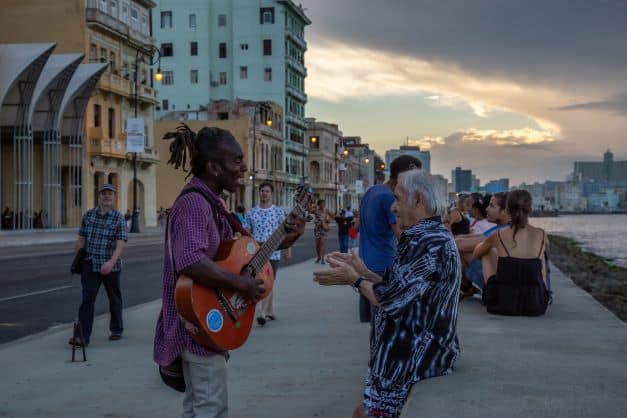
This is visible in architecture, music, religion, art, you name it. There are remnants of the colonial era and the American influence from the first half of the 20th Century everywhere.
In many ways, Havana lives in six different decades at once, depending on what perspective you choose.
3. Walk The 500-Year-Old Streets Of Old Havana

When Christopher Columbus first laid eyes on the main island of Cuba centuries ago, rumors have it, he said it was “the most beautiful earth than human eyes had ever seen”.
In Old Havana, you can walk the narrow streets and feel the ambiance everywhere. From its long and quirky history in parks, squares, architecture, and, not least, the people.

When the Spanish arrived, there were about 100,000 indigenous people in Cuba. Fifty years later, there were only about 200 left. The rest perished because they could not handle the diseases brought by the Europeans.
So, the population of Cuba today are descendants of immigrants from Europe and involuntary immigrants from Africa.
Also read: Cuba Trips From US: How To Travel To Cuba From US
4. Experience The World Of Music In Cuba

The music in Cuba today, including all the dance, the instruments, and the performances, is a result of the merging of different cultures that have been brought to Cuba over centuries.
Mostly from Spain through the colonial era and West Africa through naval trade and slavery, but also from other places like France and the US.
Cuban music is considered one of the richest and most influential regional music genres in the world. For centuries, it has attracted composers and musicians to study and create in Cuba.
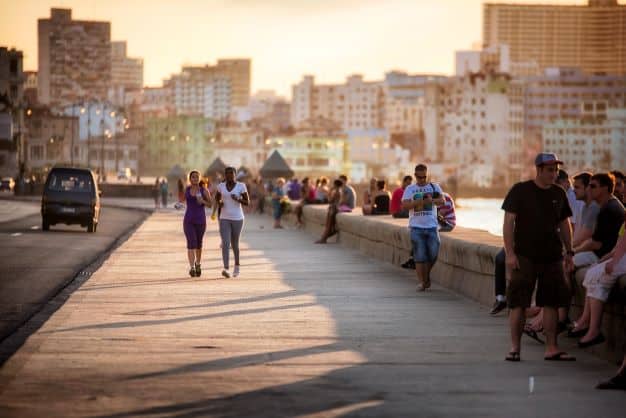
Over time, bits and pieces of Cuban music have contributed to the development of a variety of genres and musical styles worldwide, but mainly in the Caribbean region, West Africa, and Europe.
For example, the Cuban son, or son Cubano, that merges the Spanish guitar, melody, and lyrical traditions with Afro-Cuban percussion and rhythms.
Other dance styles include rhumba, salsa, Afro-Cuban jazz, the Angolan kizomba, and re-adaptations of Afro-Cuban music. Also, some Spanish fusion genres like flamenco have Cuban elements and a wide variety of styles throughout Latin America.
You can’t walk far anywhere in Cuba without being subject to music, a band playing, or just someone playing music or singing somewhere.
Wherever in Cuba you are, there is a Casa de la Musica you need to visit.
5. Explore A Whole City That Is A Colonial-Era Museum

Visit Trinidad, and you will see that the whole old city is practically an outdoor living museum where you can walk around to explore in the open air.
The city was the first super-wealthy “sugar-Metropol” in Cuba for a while when the sugar trade peaked until Cuba was priced out of the market and other countries took over.
This caused an abrupt shutdown of the sugar industry in Cuba, and Trinidad was forgotten and became a quiet backwater even within Cuba.
When other cities modernized, Trinidad simply stayed the same.
This is why you can walk around in the cobble-stoned streets of the old city today, and see firsthand what a colonial-era city looked like.
Also, visit the Valle de Los Ingenios, or Valley of the Sugar Mills, to see remnants from this prosperous era in Trinidad.
A living museum, it includes the sites of 75 former cane sugar mills, plantation houses, barracks, and other facilities related to this former industry.
Take a day on horseback riding outside Trinidad, try to extract sugar elixir from the canes, and make your own drink to enjoy with a cigar.
6. Natural Parks In Cuba
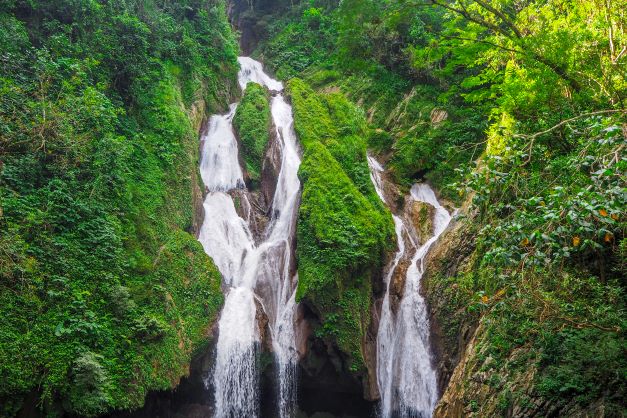
Cuba is home to several natural parks and protected natural reserves, some of which are even protected through the UNESCO World Heritage Site organization.
The Viñales Valley, for example, has a very special feature on the valley floor called mogotes. Those are small “mountains” that sit on the valley floor like sugar tops, vegetated with green plants all around.
On the Varadero Peninsula is a small eco-reserve called Varahicacos Ecological Reserve, protecting the flora and fauna of this specific area of Cuba.
Outside of Trinidad, you can spend a day in the Topes de Collantes reserve, part of the Sierra de Escambray Range.
Explore hiking trails, freshwater springs, underground rivers, waterfalls, natural pools, orchid gardens, and cafes and restaurants.
Caguanes National Park is an eco reserve on the northern shore of Cuba, between Santa Clara and Camaguey. This area is known for its caves, murals, and – bats!
On the absolute western tip of Cubas’s main island is the Guanahacabibes Peninsula National Park. This is one of Cuba’s largest protected natural areas and was declared a UNESCO World Biosphere in 1987.
On the eastern part of the island, you also have the vast Sierra Maestra mountains, which is home to the highest peak in Cuba. It was also the hiding place and HQ for the resistance movement in the 50s for Fidel Castro and his brothers in arms. You can visit this place today after a short hike into the mountain.
Lastly, the Ciénaga de Zapata National Park in Matanzas province contains extensive and varied ecosystems. These range from mangrove forests, seagrass beds, coral reef barriers, and deep reefs to the Cazones Gulf and an underwater canyon region.
7. Find Out Firsthand How Cuban Cigars Are Made (And Rum) (And Buy Some)

In several regions of Cuba, lush fields and farmlands are where the famous Cuban cigars and rum are made.
You can see how this is done best in the northwest part of Cuba, in Pinar del Rio province, where you find the Viñales Valley, and further west, the town of San Luis.
You may also take day tours outside Trinidad and test cigars, sugar cane drinks, and the local rum as well.
8. Fantastic All-Inclusive Resorts | Varadero And The Keys
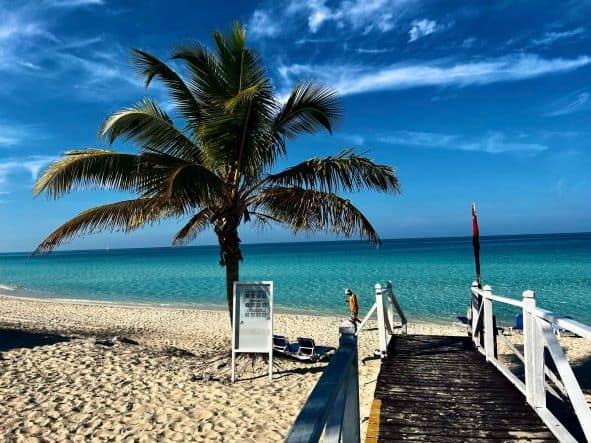
Even with all the culture, history, and fascinating architecture that I suggest you spend time exploring, let’s not forget Cuba is still a Caribbean island.
The two best areas that are made for chillaxing in a paradisiacal environment are Varadero and the various Cuban Keys.
Here, you can lounge for a few days or a week in an all-inclusive resort and really go all-in on the pampering experience if you want!
You can also stay in a Casa Particular in Varadero Town, which is just a few meters away from the beach and bars, cafes, and restaurants.
9. Learn About The Cuban – American History
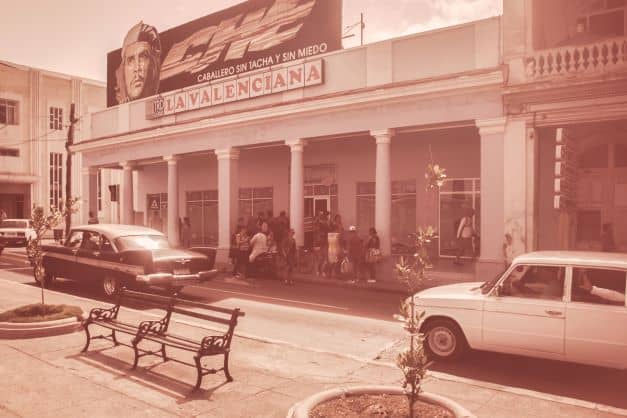
Whether history normally is “your thing” or not when you travel, the intriguing modern history between Cuba and the USA is better than any thriller novel if you ask me.
What do they say, “You can’t make this s**t up“?
After 300 years of colonial rule, the Spanish lost the Spanish-American war that secured freedom for Cuba in 1898 with a lot of help from the USA.
From 1898 to 1902, many things happened that would keep the most conservative conspiracy theorists pondering for decades. Rumors about negotiations, secret meetings, treaties, and whatnot.
Whatever really happened, the result was that the USA acquired the right to influence Cuba in all matters that mattered. Like money and business.
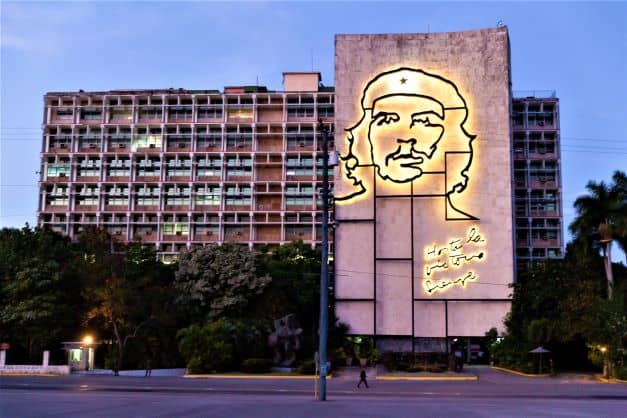
They did so for the next 50 years or so until the famous event when Fidel Castro and his comrades took power in Cuba from Batista on New Year’s Eve in 1958, and the world changed.
I do recommend you take the time to experience these events from the other side of the perspective when you are here.
Visit the Museum of the Revolution in Havana and the Museum of the US invasion of Playa Giron in 1961, for example. Regardless of your personal opinion, it is an intriguing story.
10. Find Out What Is Life Like In Cuba
When visiting Cuba, you have the opportunity to go beyond the facade if you choose to. The old classic cars, beaches, and luxury hotels are great, but so is learning what real life is like in Cuba today.
Choose to stay in a Cuban Casa Particular, in Havana, or anywhere else.
You will see how the locals are dealing with everyday challenges in this secluded Caribbean paradise. The pandemic, the sanctions, and the domestic reforms are all factors that will affect Cuban life.
You will also get to taste Cuban cuisine (yucca, ropa vieja, plantain, and more), eat in the paladares, practice your Spanish, AND you can practice your rum-drinking if you want to!
Elegantly handling Cuban rum cocktails takes a bit of practice, maybe more than once.
Take it from me, and let’s leave it at that. If you also want to read about what it takes to live in Cuba now, you can read this article that I wrote for Spend Life Traveling a while ago.
11. Take The Train Journey (Or Bus) From Havana To Santiago De Cuba
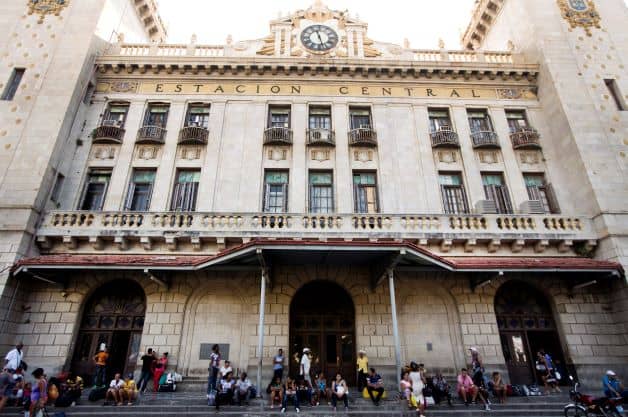
If you are a fan of slow travel and consider all parts of your journey part of your experience, you should definitely consider taking the train from Havana to Santiago de Cuba.
That train journey should take around 12 hours, but it may take more (things se rompe (break) in Cuba)—or it may not even get there at all.
It is not possible to get a train ticket online, so you will have to go to the train station, stand in line, and bring all your papers with you for the bureaucratic process of buying a ticket. It might take a while.
Once you have it, you can pack your bags, remember to bring drinks, meals, snacks, and music (there are very few little shops anywhere), lean back, and enjoy your slow journey.
And leave it up to faith whatever happens next! Just remember to be at the station one hour prior to departure.
You can also travel from Havana to Santiago with the Viazul bus, which will take between 15 and 20 hours.
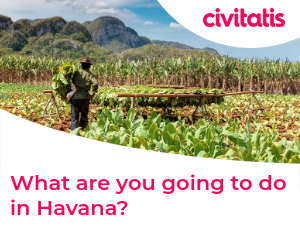
12. Feel The Unique Ambiance Of Cuba
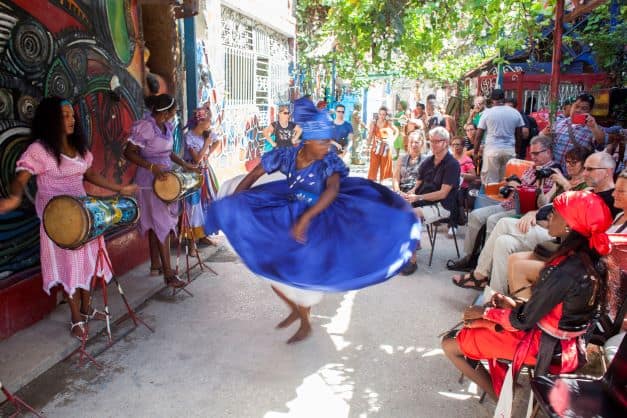
There is no other country like Cuba. You will feel the ambiance from the minute you exit the “arrivals” hall.
Of course, all countries have their unique traits, I know. However, Cuba, with its modern political history, current situation, and old history as a colony of Spain,
It is like the country is living in six different decades at the same time, with donkeys in the streets of Vinales, horses and carriages in Trinidad, and smartphones, Classic American cars, and 4G in Havana.
The geographic location in the middle of the Caribbean Sea and the conglomerate of weird series of more or less random events is something else. You are going to want to experience Cuba.
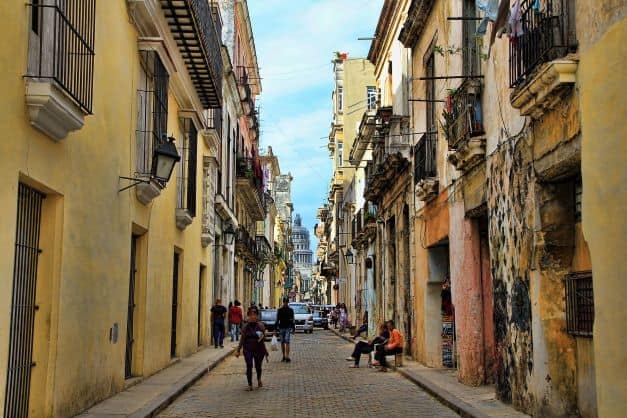
The Best Time To Visit Cuba
The dry season is also the high season in Cuba, running from November through April every year, while the wet season is May through October. The summer months are also popular, coinciding with many summer holidays worldwide.
Be aware, though, that the temperature from June through to August often exceeds 40 degrees Celsius, and the humidity is high.
Also, the period around Christmas, December through February is high season, although these are the chilliest months in Cuba.
My advice is to travel between April and June if you can. You may have to endure some afternoon rain showers in June (and maybe the occasional storm), but if you don’t mind that, you’ll be great.
Here are a couple of Cuba packing tips: bring light clothes, a water bottle with a filter, and a personal fan – or simply choose to take your Cuba holiday a bit off the high season.
FAQs Cuba Travel
Why are US citizens not allowed to travel to Cuba?
This is NOT correct. US citizens ARE ALLOWED to travel to Cuba.
Americans can choose a reason for Cuba travel among 12 pre-approved reasons for traveling to Cuba, determined by the US Government.
Can US citizens travel to Cuba as a tourist?
Technically, US citizens are not allowed to travel to Cuba as a tourist.
However, Americans choose between 12 pre-approved reasons for Cuba travel, among which the most common one is “to help the Cuban people”.
American citizens still need to buy a tourist card, also called a tourist visa, to enter Cuba.
What are the 12 requirements to travel to Cuba?
You can read about the 12 pre-approved reasons to travel to Cuba for US citizens here.
The easiest and most common reason for Cuba travel is “to help the Cuban people”. There is no paperwork or application process connected to this, you just choose your reason and state that reason if anyone asks.
What happens if a US citizen travels to Cuba?
Nothing happens if a US citizen travels to Cuba apart from hopefully, the US citizen will have a fabulous holiday and encounter Cuban culture.
US citizens need to choose one of the pre-approved reasons to travel to Cuba and need to buy the PINK Cuban tourist card, also called a tourist visa.
Selected airlines sell this visa/tourist card, or you can buy one online.
What documents do I need to travel to Cuba?
You need the following documents to travel to Cuba:
- Passport valid for 6 months after the date of entry
- Cuban tourist card / tourist visa
- Proof of travel insurance, including health insurance
- Fill out the d’viajero.cu digital document before your journey
Do Americans need to be vaccinated to enter Cuba?
No, there is no requirement for specific vaccines prior to entering Cuba.
Your country’s health department probably has recommendations for what vaccines you should consider before entering Cuba.
How Do I get a tourist card for Cuba?
You can buy a tourist card online from Easy Tourist Card, or from the Cuban embassy in your country.
You might also be able to buy a Cuban tourist card from your airline or at the airport prior to departure.
It is possible to buy a Cuban tourist card at Miami International Airport at the check-in counter with American Airlines and Delta Airlines.
How Do I Get A Tourist Visa For Cuba?
A tourist visa is the same as a tourist card for Cuba. You can buy it from the following places:
- Buy one online from Easy Tourist Card
- Buy one from your airline if they offer this
- Buy one at the airport of departure if they offer this
- Buy one from the Cuban Embassy in your country
Is Travel To Cuba Allowed Right Now?
Yes, Cuba travel is allowed right now.
In addition, American citizens must choose one of the 12 pre-approved reasons for traveling to Cuba (Americans can not travel as “tourists”) and follow some simple guidelines for traveling in Cuba.
Wrap-Up Good Reasons Why You Should Visit Cuba!
You may love it or hate Cuba (or not get it at all), but I am pretty confident you are not going to forget your visit very quickly. This is why I am advocating for it to be on everyone’s bucket list.
Let me quote my mother when she left after visiting for two weeks: “This has truly been a journey of formation!” It will probably be profound for you, too.
Related blog posts:
Is Female Solo Travel In Cuba Safe? A Local Woman’s Advice
Sensational 7 Days In Cuba Itinerary By A Local
How to get a tourist card for Cuba By An Expert (Easy Guide)

